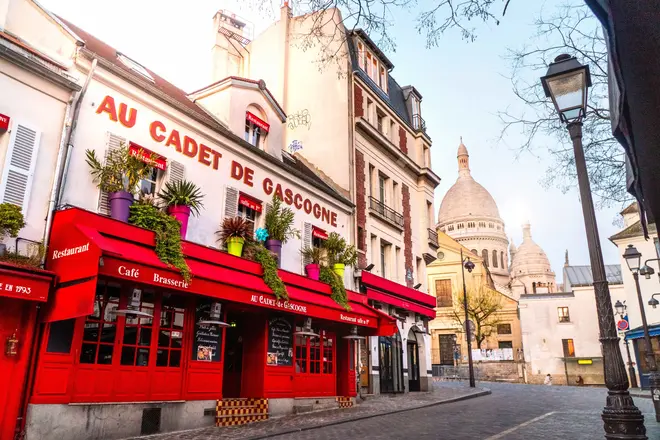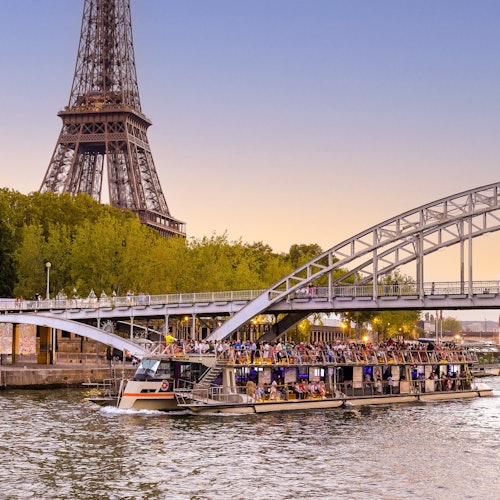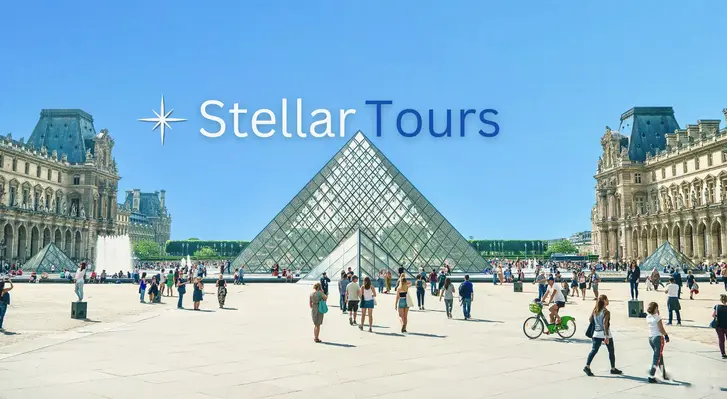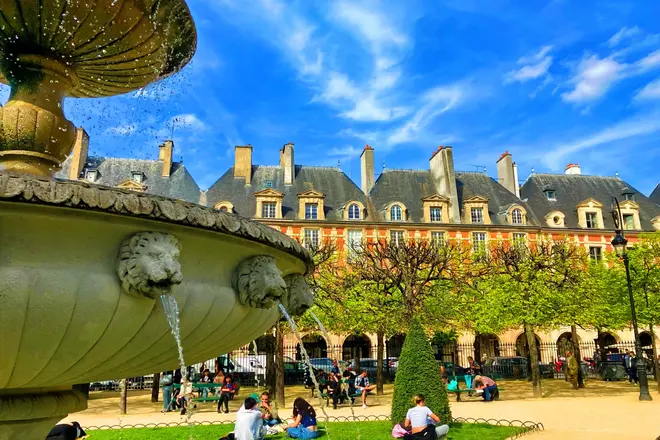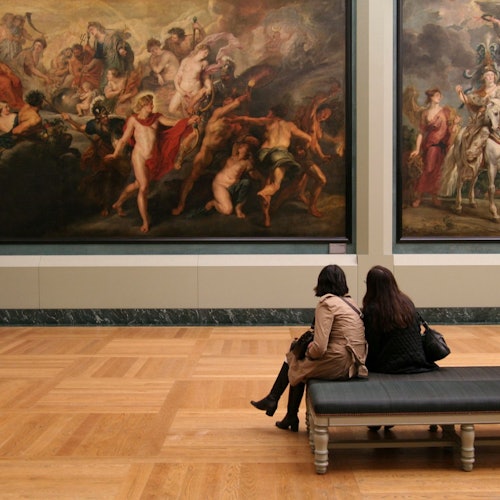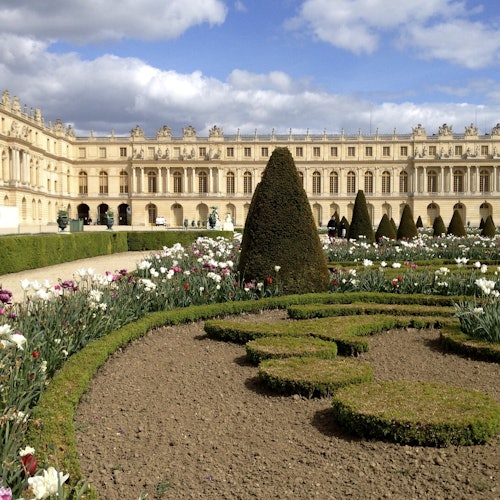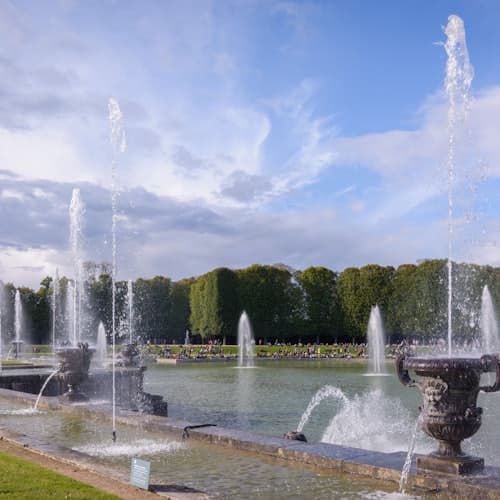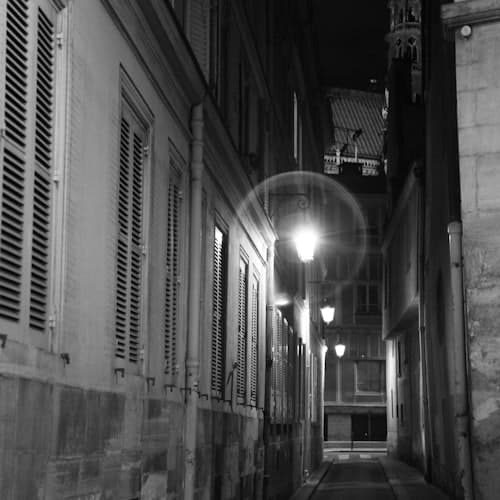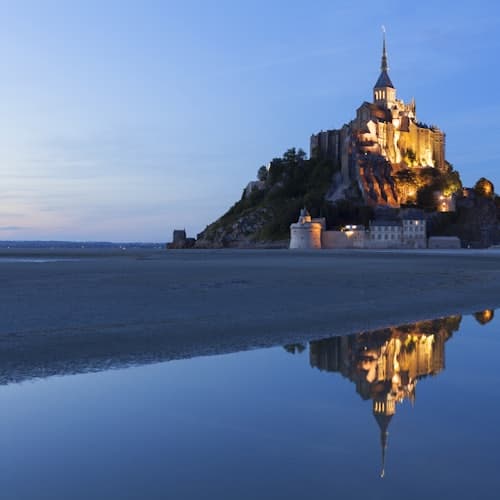Paris: the best activities and experiences
Last update:
🗼 Essential Paris Icons
First-timers win by clustering the big hitters into one scenic loop. Start at Trocadéro for that postcard view of the Eiffel Tower, then cross to Champ de Mars when the light softens.
Climb or book timed access to the Eiffel Tower, but either way budget buffer time for security. From there, stroll the Seine to Pont Alexandre III and continue toward the Arc de Triomphe for sunset on the terrace.
End with a night walk along the river to catch the tower sparkle on the hour. Metro hops keep it efficient; avoid weekend midday peaks if you can.
- Tip: early morning = calm photos; blue hour = drama
- Easiest add-ons: Champs-Élysées window-shopping; picnic on the grass
- from €17~1 h
🎨 The Louvre: Fast or Deep
The Louvre rewards a plan. Pick one theme (Italian masters, the Egyptian wing, or the "big three" route) and cap your time to stay fresh. Use the Carrousel du Louvre underground entrance if the Pyramid queue looks long.
Schedule a decompression stroll through the Tuileries afterward; if you still have fuel, Orangerie's Water Lilies makes a perfect counterpoint. Consider a private tour to stay focused through the most important collections.
Late-afternoon entries are calmer than mid-morning tours, and a second wind with coffee near Palais Royal helps.
- Smart pairing: Orsay on a separate day—impressionism reads better with fresh legs
- Headphones matter: audio keeps momentum in crowded rooms
- from €139~2 h
🚌 See Paris in One Sweep
If you've just landed, combine an open-top circuit with a short river cruise to lock your bearings. Ride one full loop without hopping off to map landmarks in your head (Invalides, Grand & Petit Palais, Place de la Concorde), then use the bus as a connector later.
Save the cruise for golden hour when bridges glow and the city switches on—it's the most time-efficient "wow" per minute.
- Practical rhythm: loop → quick café → targeted stops
- Wind and sun: pack a light layer for the top deck
- from €23~2 h
👑 Versailles from Paris
Versailles is a different pace: leave early to beat groups, do the State Apartments first, then flow into the gardens while energy is high. If fountains are running (usually weekends in season), follow the water music route before heading to the Trianons and the Queen's Hamlet.
Trains are straightforward with a guided circuit to streamline your day; plan snacks or a picnic to avoid a long lunch break cutting into your garden time. Return to Paris before the commuter squeeze.
- Packable essentials: comfy shoes, small water, sun protection
- Photo note: mirrors + crowds = patience and angled shots
- from €42~2 h
⛪ Notre-Dame & Île de la Cité
This compact loop layers history and atmosphere. Start at Pont Neuf for river views, slip into Place Dauphine's quiet triangle, then circle Notre-Dame to observe the façade details and restoration progress.
Time Sainte-Chapelle when light floods the stained glass (late morning or late afternoon works beautifully). A guided orientation helps you catch details you might otherwise miss.
Follow the bouquinistes along the Seine and detour for a pastry on Rue de la Huchette before crossing back via Pont Saint-Michel.
- Keep it slow: details reward lingering—look up for gargoyles and roof lines
- Easy add-on: the Conciergerie for medieval-to-revolution context
- from €14~1 h
🚶 Neighborhoods to Wander
Paris makes the best sense at walking speed. In Le Marais, stitch together galleries, quiet courtyards, and Place des Vosges, then snack your way along rue des Rosiers.
Montmartre is stairs and stories—climb through backstreets to Sacré-Cœur, then drift down via artists' squares and pocket cafés. The Latin Quarter leans bookish: browse along the Seine, peek at the Sorbonne, and slide into hidden lanes near the Panthéon.
Saint-Germain brings old-school cafés; Canal Saint-Martin is for lazy afternoon picnics. Aim for mornings in Montmartre and late afternoons in the Marais to dodge crowds and find better light.
📸 Viewpoints & Night Shots
For pure drama, think edges and elevations. Trocadéro at sunrise clears the stage; the Arc de Triomphe terrace frames radiating boulevards at sunset. The steps of Sacré-Cœur deliver a free, wide skyline—bring a light jacket for the breeze.
Rooftops at Galeries Lafayette or Printemps work when you want height without a ticketed climb, and Pont Alexandre III is unbeatable for blue-hour bridge portraits.
Pack minimal gear (tripods are cumbersome in crowds), and use buildings' edges to brace for low-light shots. After dark, the Eiffel Tower sparkle on the hour gives you a five-minute window: scout your composition beforehand.
🥖 Eat the City
Keep it low-fuss and delicious. Build a picnic from a fromagerie, boulangerie, and a fruit stall—Marché d'Aligre for bargains, Rue Cler for convenience, or along Canal Saint-Martin for lazy afternoon grazing.
Many parks allow picnics (check signs), but glassware and open alcohol have local rules—discretion and tidiness go a long way. Aim for shade in midday and warm lawns near sunset.
For sit-downs without stress, target bistros that take early walk-ins and skip places with aggressive barker menus; your nose and a short, seasonal chalkboard are better guides than online popularity alone.
🚂 Best Day Trips
Match the destination to your vibe. Art and gardens? Giverny when Monet's lilies bloom. Royal pageantry? Versailles (gardens and Trianons add space). Bubbles and cellars? Champagne country—Reims for the cathedral plus tastings, Épernay for the Avenue de Champagne.
Medieval fix? Provins' ramparts and shows. Sacred architecture? Chartres' stained glass. Big ambition? Mont-Saint-Michel needs a long day and tight logistics.
Check opening days and train frequencies with a curated overview, and group wineries or museum slots in one pocket of the day to avoid criss-crossing.
- from €59~24 h
💡 Free & Practical Paris
Balance budget with pleasure. Free classics include Luxembourg Gardens, the Tuileries, and the Coulée Verte (an elevated linear park) for a leaf-through-the-city stroll. Some museums run free entries on specific days—verify dates before reshuffling your plan.
Passes only pay off when you stack 2–3 paid sights per day; if your style is "slow and a few highlights," buy singles. Metro wins for speed: keep your ticket until you exit barriers, watch for pickpocket zones around popular stations, and download offline maps for when signal dips.
At night, stick to lit streets and well-trodden areas; the city feels friendlier when you move with intent and look up often.
Quick Comparison
| Activity | From price | Duration |
|---|---|---|
| Eiffel Tower Tickets | from ~€17 | ~1 h |
| Louvre Museum Private Tour | from ~€139 | ~2 h |
| Hop On Hop Off Paris | from ~€23 | ~2 h |
| Palace of Versailles Tour | from ~€42 | ~2 h |
| Notre-Dame Cathedral Tour | from ~€14 | ~1 h |
| Day Trips from Paris | from ~€59 | ~24 h |
